The Most Common Electrical Code Violations—And How to Prevent Them
Introduction
Whether you're wiring a new home, upgrading a panel, or installing an EV charger, following the National Electrical Code (NEC) is essential. But even experienced electricians and contractors can overlook common details that lead to failed inspections, callbacks, or worse—safety hazards.
This article highlights the most frequent NEC violations found in residential and commercial projects—and provides simple, actionable strategies to avoid them.
1. Missing or Incomplete Panel Schedules
Code Reference: NEC 408.4(A)
Violation: Panelboards installed without a complete and accurate circuit directory.
Why it matters: An incomplete or mislabeled directory creates confusion during maintenance and emergencies.
How to prevent it:
Label every circuit at installation.
Update directories after changes or additions.
Use typed or printed labels for legibility.
2. Improper Grounding and Bonding
Code Reference: NEC 250
Violation: Neutral bonded in subpanels, missing ground rods, or improper conductor sizing.
Why it matters: Improper grounding can result in shock hazards, stray current, and nuisance tripping.
How to prevent it:
Only bond neutral and ground at the main service.
Install dual ground rods where required.
Use NEC 250 tables to size grounding electrode conductors correctly.
3. No GFCI Protection Where Required
Code Reference: NEC 210.8
Violation: Missing GFCIs in kitchens, bathrooms, garages, outdoors, laundry areas, and basements.
Why it matters: GFCIs are critical for preventing electric shock in wet or damp locations.
How to prevent it:
Always check the latest NEC version (requirements expand almost every cycle).
Use GFCI breakers or outlets rated for the environment (weather-resistant outdoors).
4. No AFCI Protection in Required Areas
Code Reference: NEC 210.12
Violation: Branch circuits in bedrooms, living rooms, or dens missing arc fault protection.
Why it matters: AFCIs prevent electrical fires caused by arcing conductors.
How to prevent it:
Use AFCI breakers or combination AFCI/GFCI receptacles.
Understand that most new dwelling circuits require AFCI protection—even lighting circuits.
5. Box Fill Violations
Code Reference: NEC 314.16
Violation: Too many wires stuffed into an outlet, switch, or junction box.
Why it matters: Overfilled boxes generate heat and make connections unreliable.
How to prevent it:
Count conductors, devices, and grounds using NEC volume allowances.
Use larger boxes or extension rings when needed.
6. Improper Conductor Termination
Code Reference: NEC 110.14(A)
Violation: Wires not secured properly, wrong wire type for terminal, or over-stripping insulation.
Why it matters: Loose or incorrect terminations cause arcing and overheating.
How to prevent it:
Match wire type (copper vs. aluminum) and size to terminal ratings.
Use torque screwdrivers where required.
Avoid damaging wire strands or insulation during prep.
7. Inadequate Working Space Around Panels
Code Reference: NEC 110.26
Violation: Panels installed in closets, behind doors, or with insufficient clearance.
Why it matters: Inaccessible equipment delays shutoff and creates serious hazards during servicing.
How to prevent it:
Ensure 3 feet of clear working space in front of all service equipment.
Maintain proper width (equal to panel width or 30 inches minimum).
No obstructions (shelves, plumbing, appliances) in required space.
8. Reversed Polarity at Receptacles
Code Reference: NEC 110.3(B), UL Listing Requirements
Violation: Hot and neutral wires reversed at receptacle terminals.
Why it matters: Reverse polarity poses serious shock hazards, especially for grounded appliances.
How to prevent it:
Double-check terminal markings (gold = hot, silver = neutral).
Use plug-in testers to verify wiring before closing up.
9. Unsecured or Unsupported Cables
Code Reference: NEC 334.30
Violation: NM (Romex) or MC cable not supported within 12" of boxes or every 4.5 ft.
Why it matters: Unsupported cables can sag, wear, and get pinched.
How to prevent it:
Use proper staples or cable straps.
Avoid over-tightening and damaging insulation.
Secure cables per code distances (including vertical drops).
10. Improper Use of Extension Cords or Temporary Wiring
Code Reference: NEC 590
Violation: Extension cords used as permanent wiring in shops, basements, or attics.
Why it matters: Temporary wiring can overheat and is often not rated for long-term use.
How to prevent it:
Install proper outlets and circuits for permanent needs.
Use temporary cords only during construction or maintenance.
Educate clients or staff on safe practices.
Conclusion
The most common electrical code violations aren’t exotic—they’re everyday oversights. By taking time to understand the NEC, using checklists, and applying good field habits, you’ll avoid inspection failures, callbacks, and—most importantly—safety risks.
Whether you’re wiring a house or managing a facility, code compliance is more than a requirement—it's a mindset.
References
NEC 2023:
Article 110 – Requirements for Electrical Installations
Article 210 – Branch Circuits
Article 250 – Grounding and Bonding
Article 314 – Outlet, Device, Pull and Junction Boxes
Article 408 – Switchboards and Panelboards
NFPA 70E – Electrical Safety in the Workplace
IAEI – Common Inspection Errors Database
Disclaimer:
The information, tools, and resources provided on this website are for general informational purposes only. While Empower Engineering strives to ensure accuracy and relevance, no guarantee is made regarding the completeness or applicability of the content to specific projects. Users are responsible for verifying all calculations, code interpretations, and design decisions with licensed professionals and local authorities. Empower Engineering assumes no liability for any loss, damage, or code violation resulting from the use of this website’s content.
Empower Engineering | July 15, 2025
11513 W Fairview Ave Ste 101
Boise, ID 83713
admin@empowerengineering.com
208-870-4379


